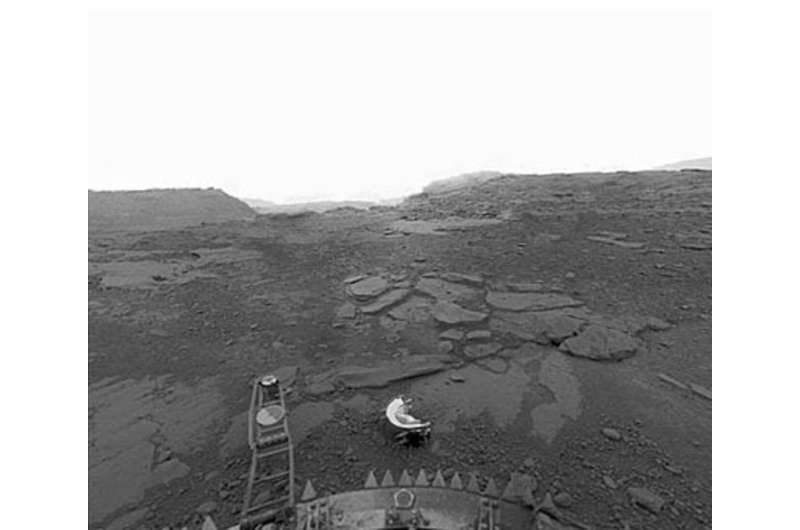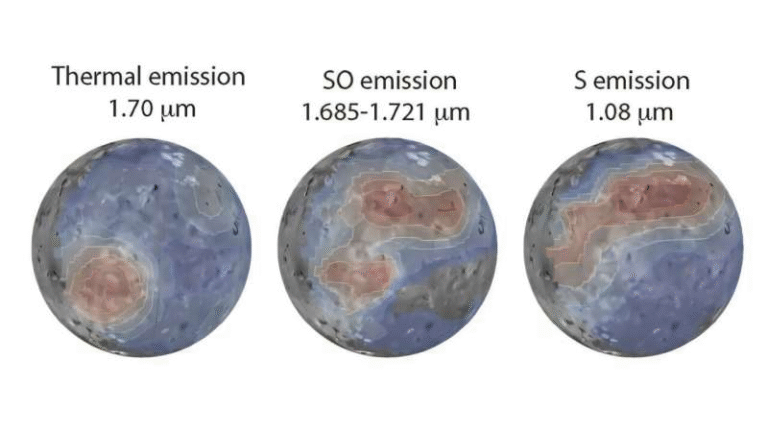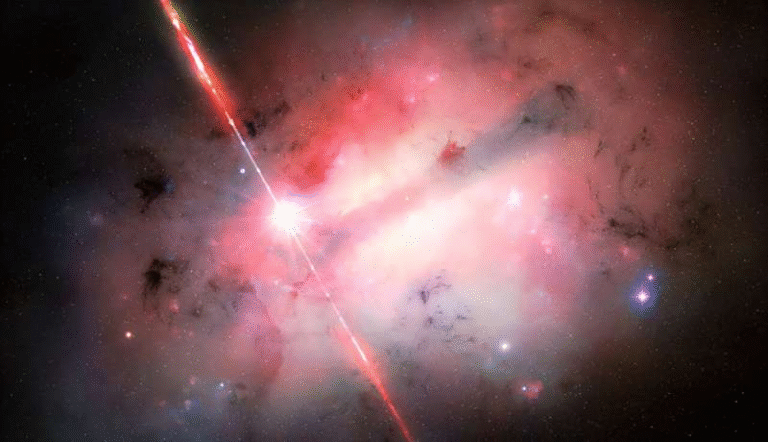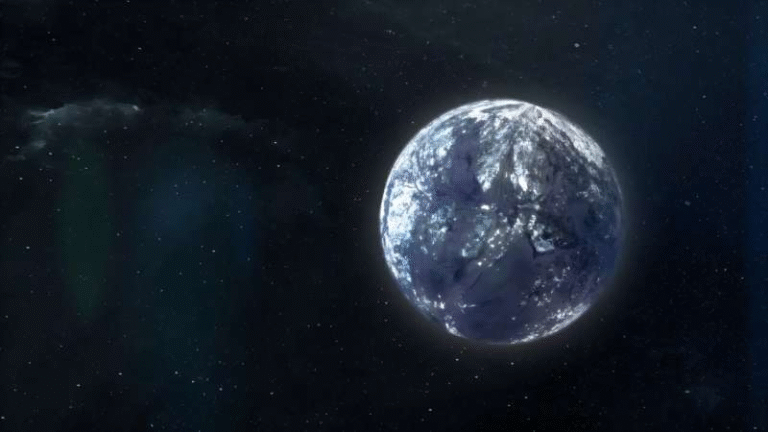New Research Sheds Light on the Strange “Anti-Weather” Patterns Near Venus’s Surface

Venus has always been one of the most puzzling planets in our solar system, mainly because its surface is incredibly hard to study. Its crushing atmospheric pressure, scorching temperatures, and thick cloud layers make direct observations rare. For decades, much of what we thought we understood about Venus’s surface came from limited data — especially from the Soviet Venera landers, some of the only spacecraft ever to survive long enough on the ground to collect measurements.
Now, a new study led by Maxence Lefèvre and colleagues at the Sorbonne takes all the scattered surface data we have and feeds it into a new regional model. The goal? To understand how winds, temperature swings, and dust movement behave at ground level on Venus — knowledge that will be crucial for the next era of Venus exploration. This work is one of the first to simulate Venus’s surface conditions with detailed regional differences instead of treating the entire planet as one uniform environment.
Understanding Why Venus’s Surface Is So Hard to Study
Venus rotates extremely slowly. One full Venus day lasts about 117 Earth days, and its night lasts equally long. Add to this an incredibly dense CO₂-heavy atmosphere and constant cloud coverage, and you get a world where surface interactions don’t behave anything like the weather systems we see on Earth.
Because surface data is rare, researchers must rely on models — but models must be validated using real observations, which are scarce. The Venera missions measured wind speeds of only about 1 m/s at the surface, which seems weak compared to Earth’s average ~20 m/s or Mars’s ~40 m/s gusts. But Venus’s atmosphere is so thick that even slow winds carry tremendous momentum.
The new study uses these limited measurements to test a high-resolution “regional simulation” that divides Venus into different zones such as highlands, lowlands, tropics, and polar regions. This is a major improvement over older models that treated the whole planet the same.
How Wind Behaves on Venus: Upslope by Day, Downslope by Night
The model identifies a fascinating pattern in Venus’s sloped regions, especially around the equator. Because Venus has such long days and nights, the heating and cooling cycles drastically affect wind.
Daytime Winds
During the long Venusian daytime, the surface slowly warms under solar radiation. In regions with slopes, this warming leads to upslope winds, also known as anabatic winds. Warm air rises along the slopes, pushing the wind upward.
Nighttime Winds
At night, something very different happens. Without sunlight, the surface cools through infrared (IR) radiation. Cooler air becomes denser and flows downslope, creating katabatic winds — downhill winds that compress as they descend. This compression warms the air in a process called adiabatic heating.
This heating effect is strong enough that it counteracts what would otherwise be dramatic nighttime cooling. As a result, Venus’s highlands have nearly stable temperatures, with less than 1 Kelvin difference between day and night. Meanwhile, the lowlands — which lack sloped terrains to drive this cycle — show temperature swings of about 4 Kelvin.
This is a strong contrast to Earth, where diurnal heating and cooling cycles play a major role in shaping local and global weather patterns.
What Happens Near the Poles?
The study finds that Venus’s poles behave differently. Because these regions receive less sunlight over Venus’s long day, they experience constant cooling. This cooling maintains persistent katabatic winds, meaning winds continually flow downslope toward lower elevations.
This is particularly important because future missions — such as EnVision and VERITAS — plan significant polar observation campaigns. Understanding surface wind behavior helps anticipate instrument temperatures, lander stability, and local dust movement.
Dust on Venus: How Fine Particles Move in the Thick Atmosphere
One of the most surprising findings involves dust transport. Even though the near-surface winds seem slow, Venus’s thick atmosphere makes them capable of lifting fine sand grains — specifically particles around 75 micrometers in size.
The authors modeled how often the winds can exceed the threshold needed to lift such particles and found important implications for upcoming missions.
The Case of Alpha Regio
NASA’s upcoming DaVINCI mission aims to drop a probe into Alpha Regio, a highland region near the equator. According to the model:
- About 45% of Alpha Regio has wind conditions strong enough to lift fine sand.
- Depending on the time of day, the landing site might be within an active fine-particle storm.
This means lander components must be ready for abrasive dust movement — a lesson Mars missions have learned the hard way.
When Does Dust Move Most?
Dust lifting is most likely to occur:
- At night
- Along slopes, especially western slopes
- When katabatic winds intensify due to cooling
This shows that dust activity on Venus is strongly tied to its unusual diurnal cycle.
Why This Study Is Important
This is one of the first models to treat Venus’s surface as a collection of regions with different terrain, slopes, and latitudes — rather than a single homogeneous environment. The result is a far more realistic picture of how temperature and dust behave at ground level.
Understanding these systems is crucial for designing:
- Lander heat-resistant materials
- Dust-tolerant instruments
- Descent trajectories
- Surface operation timelines
Future missions such as DaVINCI, VERITAS, and EnVision will rely heavily on this kind of modeling to avoid hazards and extend mission lifetimes.
Additional Background: Why Venus’s Atmosphere Behaves So Differently
To add some broader context for readers:
Venus’s Dense Atmosphere
Venus’s surface pressure is about 92 times Earth’s — similar to being almost a kilometer underwater. This means:
- Even small wind speeds produce large forces
- Heat transfer works differently
- Sound travels faster
- Dust remains suspended longer
Slow Rotation
A Venus day is longer than its year. Because of this:
- Daytime heating is extremely slow but continuous
- Nighttime cooling is equally slow and persistent
- Weather systems move sluggishly compared to Earth
High CO₂ Concentration
The atmosphere is over 96% CO₂, meaning:
- Very strong greenhouse heating
- Strong IR absorption
- Complex thermal interactions
- Thick cloud layers that trap heat
All these factors contribute to the strange “anti-weather” patterns described in the study.
Where the Research Goes Next
The authors note that their model can still be improved. Future refinements may include:
- More detailed mapping of surface albedo
- Better estimates of thermal inertia (how fast the ground heats or cools)
- More precise modeling of CO₂ absorption at varying temperatures
These improvements could help refine landing predictions, dust hazards, and the physics of slope winds even further.
Research paper:
https://arxiv.org/abs/2510.15477





